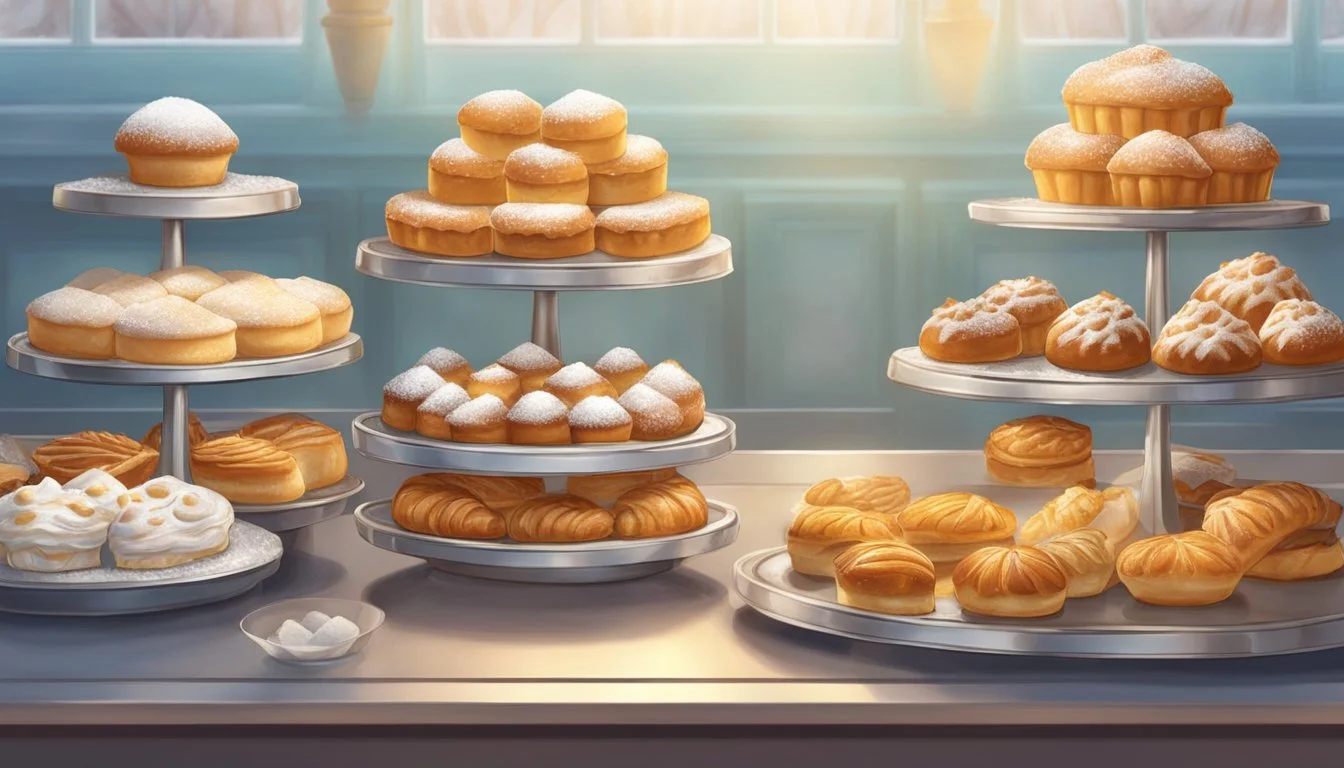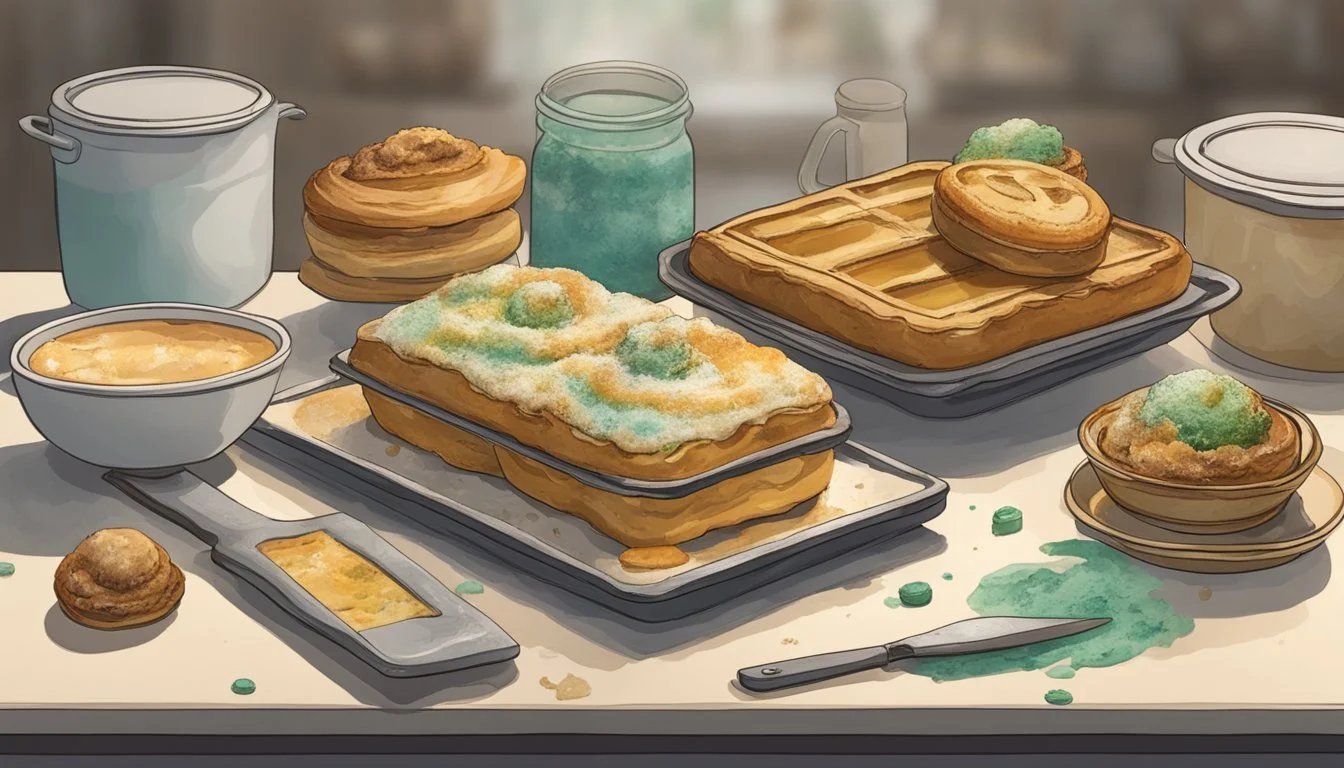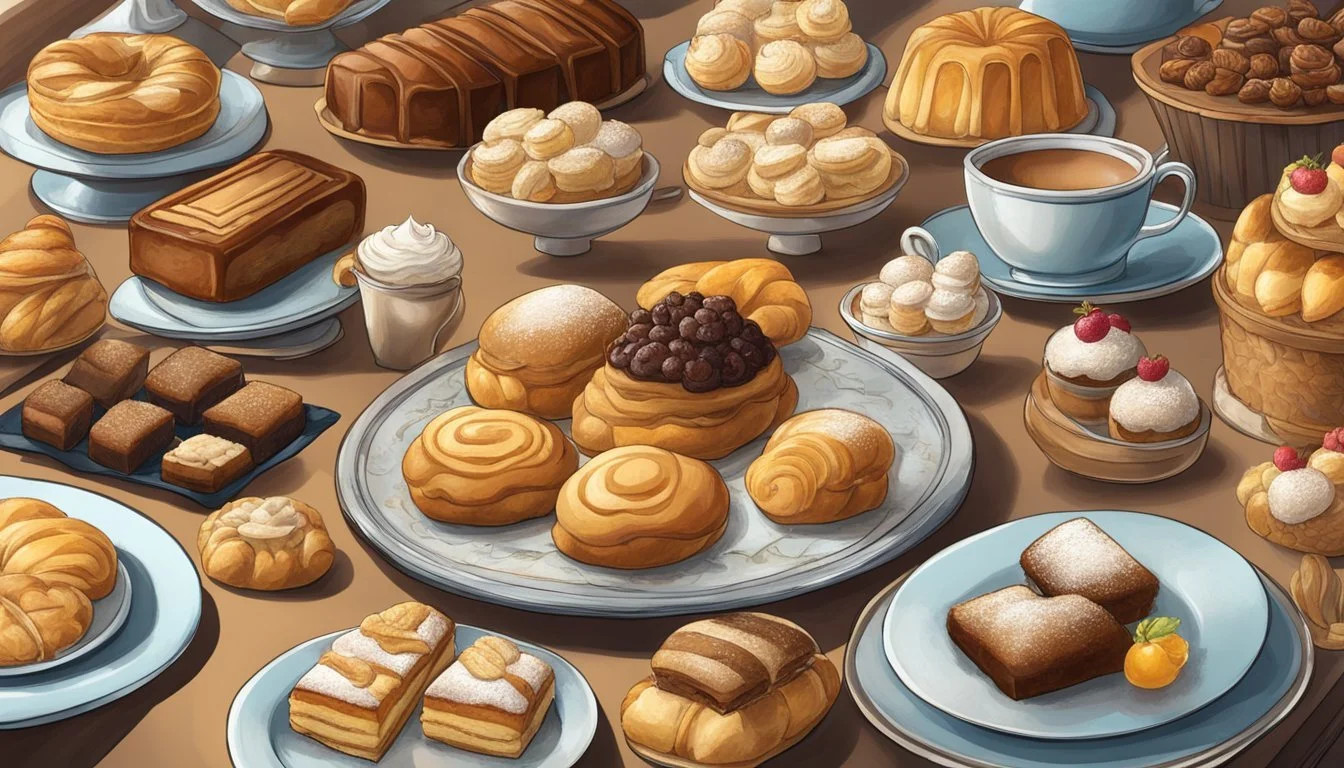How Long Do Pastries Last?
Shelf Life and Storage Tips
Pastries, with their delicate textures and rich flavors, are enjoyed by many as a sweet treat or a luxurious snack. To ensure maximum enjoyment, it's essential to understand how long these baked goods maintain their freshness. The shelf life of pastries depends on various factors, including the ingredients used, the presence of preservatives, and the method of storage.
The typical shelf life of pastries can vary significantly. For example, those made with dairy, eggs, or fresh fruit tend to have a shorter shelf life due to their perishable nature. In contrast, pastries with sugar glazes or icings may last slightly longer as sugar acts as a natural preservative. Regardless of ingredients, proper storage is key to extending the life of pastries. They should be kept in airtight containers to protect their moisture content and prevent them from absorbing any odors from other foods.
Regarding storage conditions, pastries kept at room temperature usually remain fresh for a day or two, while refrigeration can extend their freshness for up to a week, depending on the type of pastry. For longer preservation, freezing is an option, allowing pastries to be kept for several months. However, it's crucial to wrap them properly to avoid freezer burn and preserve their quality. Each method has its considerations to maintain the delicate balance of flavor and texture that makes pastries so delightful.
Types of Pastries
Pastries come in a variety of forms and flavors, each with its unique preparation technique that influences its shelf life and storage needs. They range from airy and flaky to dense and rich, accommodating a spectrum of fillings and toppings.
Yeast Pastries
Yeast pastries contain yeast as a leavening agent, resulting in a light and airy texture. Examples include croissants and danish. These pastries are best enjoyed fresh, as the yeast begins to stale when exposed to air.
Non-Yeast Pastries
Non-yeast pastries do not require fermentation and are typically denser. They include varieties like pies, scones, and muffins. These pastries can generally be kept longer than their yeast-containing counterparts before losing their optimal taste and texture.
Filled Pastries
Filled pastries can consist of either yeast or non-yeast doughs and are often enhanced with sweet or savory fillings such as fruit, cream, meat, or vegetables. Examples like fruit pies, eclairs, and toaster pastries have varying shelf lives based on their ingredients.
Specialty Pastries
Specialty pastries encompass a broad range of baked goods that often include elaborate decorations or ingredients. This category includes cakes, cupcakes, and cookies. Their longevity is influenced by factors including the presence of perishable toppings or fillings, such as fresh fruit or cream.
Optimal Storage Conditions
To maintain the freshness and quality of pastries, proper storage is essential. A combination of temperature control, appropriate containers, and environmental factors plays a crucial role in extending their shelf life.
Countertop and Pantry Storage
For pastries consumed within a few days, storing them at room temperature in a cool, dry place is suitable. Use a paper bag to allow the pastries to 'breathe' and prevent sogginess, or wrap them in plastic wrap to protect from dryness. Pastries with fruit, cream, or custard should not be stored this way due to faster spoilage.
Refrigerator Storage
Refrigeration at 35°F to 40°F (1.7°C to 4.4°C) is appropriate for pastries that require a colder environment, such as those with cream or custard fillings. Store them in an airtight container to prevent moisture loss and absorb odors. Typically, refrigerated pastries can last up to one week.
Freezer Storage
Freezing can extend the shelf life of pastries to three months. Wrap them tightly in plastic wrap or place them in a freezer bag to prevent freezer burn and excess moisture, which can lead to sogginess upon thawing. To enjoy pastries at their best, consume them within this timeframe.
Preventing Moisture and Dryness
The use of an airtight container is crucial for both refrigerated and freezer storage to control moisture levels. This prevents dryness and the accumulation of condensation that could result in sogginess and mold growth.
Protection from Sunlight and Heat
Pastries should be stored away from areas exposed to direct sunlight and heat to prevent spoilage and maintain their quality. A pantry or a cabinet provides an ideal environment for protection from such elements.
Avoiding Contamination and Pests
Always store pastries in clean, sealed containers to protect them from contaminants and pests. Regular checks for signs of mold or a stale smell can indicate spoilage, suggesting the pastries are no longer suitable for consumption.
Freezing and Thawing Pastries
When it comes to extending the shelf life of pastries, proper freezing and thawing techniques are essential. These methods ensure that pastries remain moist and flavorful after being defrosted.
Preparing Pastries for Freezing
Before freezing, one should cool pastries completely at room temperature. Individually wrapping each piece in an airtight manner using plastic wrap or aluminum foil can prevent freezer burn and maintain moisture. To further protect the pastries, place them in a freezer bag, squeezing out as much air as possible before sealing.
Maximizing Freshness in the Freezer
To preserve quality, avoid overcrowding in the freezer as this can lead to uneven freezing and potentially ruin the texture. Pastries should be stored flat and, if possible, not stacked to prevent them from getting crushed. They can remain at their best quality for up to six months in the freezer.
Proper Thawing Techniques
Thawing should be done by placing the frozen pastries at room temperature and allowing them to defrost slowly. This gradual process helps in retaining the pastry's original texture and taste. Manufacturers' instructions, if available, should be followed for the best results.
Reheating After Freezing
If a warm pastry is desired, one can reheat it after thawing. The best methods include using an oven or a microwave. Preheat the oven and place pastries on a baking sheet, reheating them gently to help maintain a moist interior. When using a microwave, short intervals at a lower power setting can warm pastries without making them tough.
Shelf-Life Expectations
When considering the shelf life of pastries, various factors such as freshness, storage conditions, and the presence of moisture must be accounted for to maximize longevity and maintain quality.
Freshly Baked Goods
Freshly baked pastries from bakeries or homemade typically maintain their best quality for a short period due to their lack of preservatives. They usually remain fresh for 1-2 days when stored at room temperature in an airtight container or wrapped in plastic to retain moisture. For optimal freshness, they should be consumed within this timeframe.
Room Temperature (Pantry): 1-2 days
Refrigerator: Not recommended, as it may dry them out
Freezer (in freezer bags): Up to 3 months
Store-Bought Pastries
Store-bought pastries, including those that are pre-packaged or from the bakery section, can last longer due to added preservatives. However, their shelf life can vary significantly depending on the type of pastry and its ingredients.
Room Temperature (Pantry): See package for expiration date
Refrigerator (in a paper bag or airtight container): Usually extends freshness by several days
Freezer (in airtight container or wrapped in plastic and then in freezer bags): Up to 6 months for some varieties
Extended Shelf Life Practices
To maximize the shelf life of pastries:
Store them in airtight containers or wrap tightly in plastic wrap to prevent them from drying out.
For cream-filled or custard-based pastries, always store in the refrigerator to maintain freshness and prevent spoilage. These typically last 2-3 days.
For long-term storage, freezing is effective. Wrap pastries individually in plastic and place them in freezer bags to prevent freezer burn and odors.
Toaster pastries can be stored in the freezer for 2-3 months.
Thaw pastries in the refrigerator overnight or at room temperature before consuming to ensure the best quality and taste.
Recognizing Spoilage
When pastries begin to spoil, they exhibit specific visual, textural, and sensory changes that indicate they are no longer suitable for consumption.
Visual and Textural Changes
One can readily observe the spoilage of pastries through visual inspection. Mold growth is a clear sign that pastries have exceeded their shelf life. Molds may appear in various colors, including white, green, or black, and indicate the presence of microbial activity. Pastries with any signs of mold should be discarded immediately.
The texture of a pastry also provides clues to its freshness. A once-flaky or tender pastry may become stale and dry, or, conversely, a crispy crust may turn soggy due to moisture absorption. These changes often precede spoilage and may signal a decrease in quality even when mold is not visibly present.
Sensory Quality Deterioration
Apart from the visual cues, one's sense of smell and taste are reliable indicators of spoilage. Pastries that emit an off-flavor or have an unpleasant odor—characteristically sour or musty—are likely spoiled. Similarly, the taste of the pastries may become bland or develop unexpected off-flavors.
Consistent flavorful quality is a telltale sign of optimal freshness. When that flavor diminishes or alters significantly, it may be best to err on the side of caution and dispose of the product to avoid potential foodborne illnesses.
Safe Handling of Pastries
Proper storage, careful handling, and adequate baking practices are crucial to ensure the longevity and quality of pastries. Attention to detail throughout the preparation and storage processes can affect the texture, flavor, and safety of baked goods.
Before You Bake
Baking pastries requires attention to detail. Depending on the type of pastry, ingredients like butter, eggs, and chocolate should be handled with care to achieve the best results.
Ingredients: Store ingredients at the correct temperatures—butter should be chilled, while eggs often need to be at room temperature.
Preparation: Clear countertops and ensure all baking equipment is clean to prevent contamination.
After Baking
Once pastries are baked, they need to be cooled and stored properly to maintain their quality.
Cooling:
Allow cookies, cakes, and muffins to cool on a baking rack for even air circulation.
Pastries, especially those with icing or glaze, should not be packaged until completely cooled to avoid moisture buildup.
Storing Pastries:
Wrap baked goods individually in plastic wrap to keep them fresh.
Store them in an airtight container to prevent drying out.
If the pastries have fillings or frosting with dairy or eggs, they should be refrigerated.
Serving and Presentation
The presentation of pastries can have a significant impact on their reception.
Handling with Care: Transfer cakes or chiffon pastries gently to avoid crumbling.
Serving Temperature:
Serve pastries at the appropriate temperature for optimal flavor.
Iced or glazed items should remain at a cool temperature to maintain appearance.
Frequently Asked Questions
While addressing the preservation of pastries, it's crucial to understand how different storage methods affect their shelf life. This section will clarify some common questions regarding the handling of pastries post-baking.
Can You Refreeze Thawed Pastries?
One should exercise caution when refreezing pastries. While it is technically possible, the quality may deteriorate due to moisture loss during thawing, leading to a less palatable texture. If initially frozen correctly in an airtight container or tightly wrapped to prevent freezer burn, refreezing may be viable for pastries that do not contain cream, custard, or fruit fillings.
How Long Can Pastries Stay Out of the Fridge?
Pastries can generally remain at room temperature for up to two days if they are kept in a cool, dry place. Those containing cream, whipped cream, or custard should be refrigerated within two hours to prevent spoilage. For optimal freshness, storage in an airtight container is advised to ensure they maintain their quality and flavor.
Are Certain Pastries Prone to Quick Spoilage?
Pastries filled with dairy products or fresh fruit are particularly susceptible to spoilage. They typically have a fridge shelf life of 1-2 days for fruit fillings and 3-4 days for cooked fruit or custard. In the refrigerator, at 35°F to 40°F, these pastries need careful storage, often in an airtight container, to extend their freshness and prevent the absorption of other food odors.
Conclusion
When it comes to preserving the quality and freshness of pastries, proper storage practices are essential. Pastries should be stored in airtight containers or tightly wrapped in plastic wrap to protect them from drying out and to maintain optimal freshness. For best results, they should be placed in a refrigerator set to a temperature between 35°F and 40°F.
Safety is also a consideration; any pastry with cream, cheese, or egg-based fillings needs to be refrigerated to prevent spoilage. In terms of shelf life, most pastries last up to two days at room temperature and can extend to five days when refrigerated.
For those who wish to keep their pastries beyond a few days, freezing is an option. Properly wrapped pastries can typically last in the freezer for up to two months. However, it's important to note that the texture and taste may alter slightly after freezing and thawing.
In summary:
Store pastries in airtight containers or plastic wrap.
Refrigerate at 35°F to 40°F to extend freshness.
Shelf life is typically two days at room temperature, five days refrigerated.
For long-term storage, freeze for up to two months.
It is by adhering to these storage guidelines that the integrity of the pastries can be preserved, ensuring that they remain safe to consume and as close to their original taste and texture as possible.








